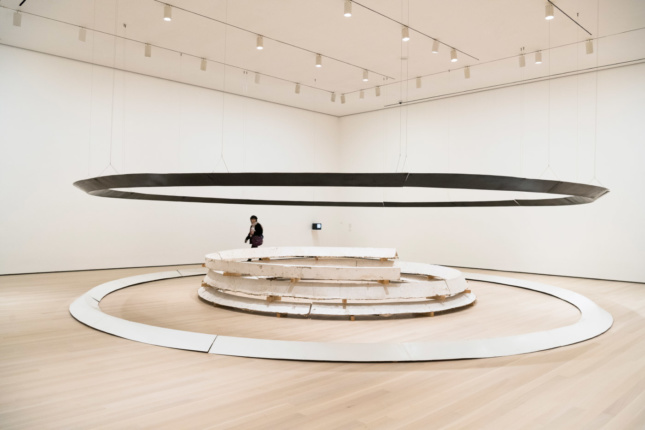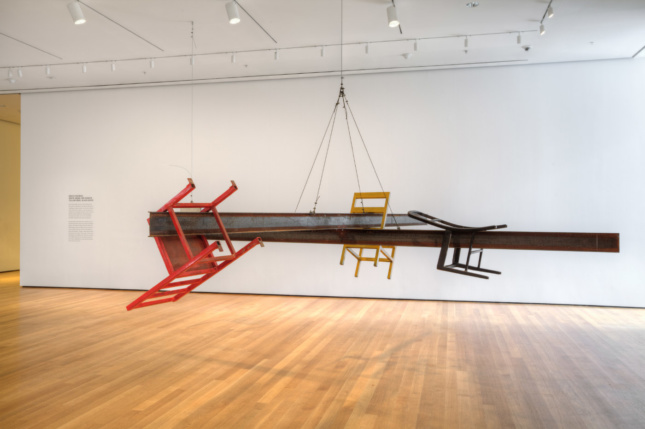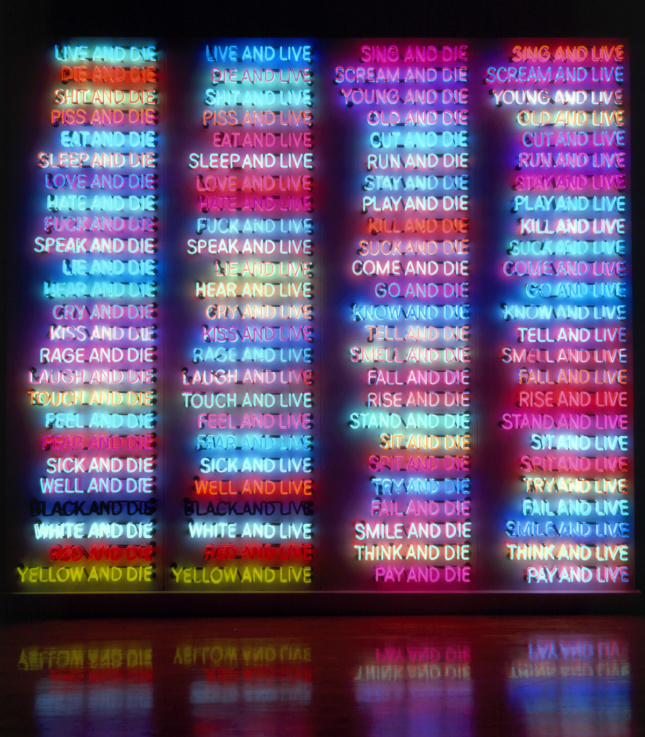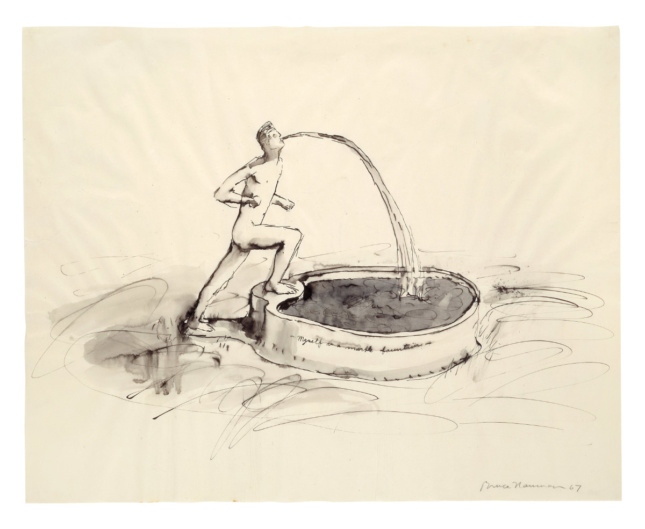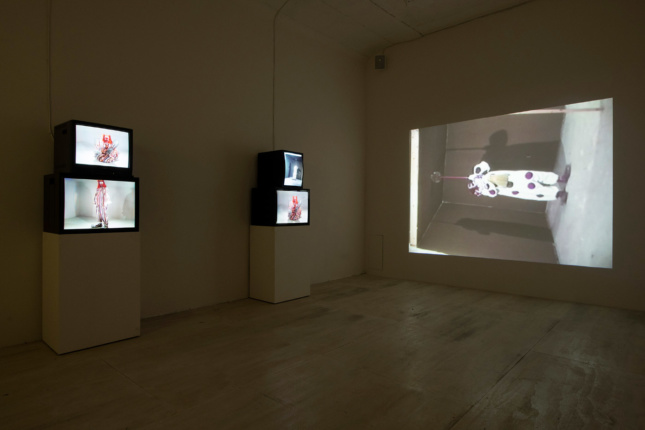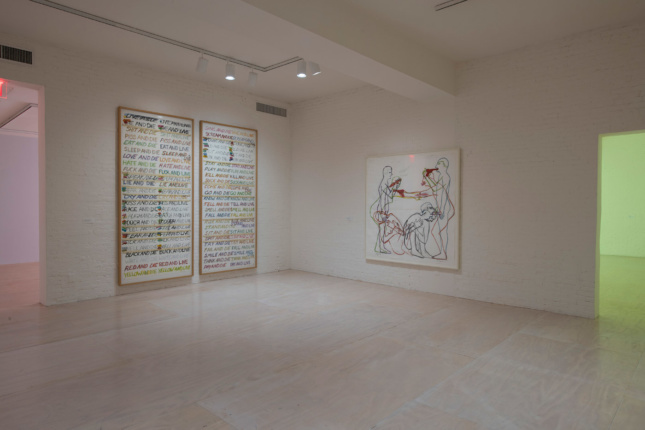At a panel discussion a week after the October 21 opening of Bruce Nauman: Disappearing Acts at the Museum of the Modern Art (MoMA), Laurenz Foundation curator and advisor to the director at the MoMA, Kathy Halbreich, discussed how poorly Nauman’s last two retrospectives were received.
The first, a major solo show that traveled from the Whitney Museum of American Art to the Los Angeles County Museum of Art (LACMA) in 1972, was pilloried by the press as vapid. The second, a 1995 exhibition at the MoMA (co-organized by Halbreich) was criticized as overly loud and chaotic. The volume has been turned down for the versatile artist’s third show but his stinging examinations of surveillance, “fake news,” bodies in space, and the ultimate futility of life are more relevant now than ever.
The MoMA has pulled out all of the stops for Disappearing Acts, literally in some instances. The walls of MoMA’s sixth floor have been cleared so the whole floor can be dedicated to Nauman’s larger, more architectural explorations of space, while the entirety of PS1 in Queens has been handed over to smaller installations. All told, the MoMA has put 165 pieces of sculpture, drawings, video art, neon work, soundscapes, paintings, and more on display, much of it on loan from other institutions and private collectors.
In Midtown, visitors are guided through a chronological tour of Nauman’s larger works across the repurposed special exhibition galleries, beginning with his own experiments in using the body as a tool of art. Arms were used as both paintbrushes and hole-punchers in Nauman’s earlier work, and pieces were formed and named according to his own body proportions.
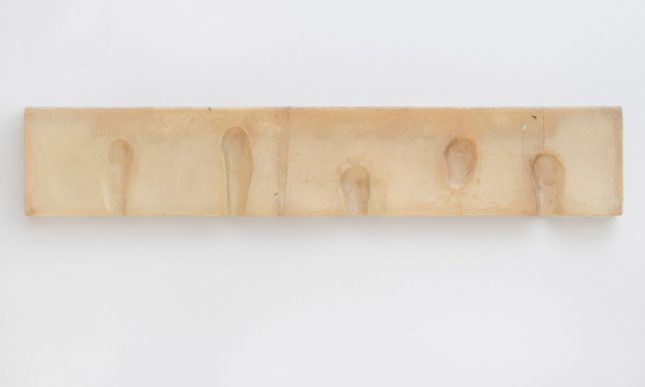
Further in, Nauman’s meditations on surveillance in the urban environment become evident; take Going Around the Corner Piece, a “room” with no way to enter, covered in security cameras that relay their feeds to televisions on the ground. Visitors are encouraged to encircle the room as they “chase” the digital reflections ahead of them.
The massive Model for Trench and Four Buried Passages has been installed beyond that, placing an “architectural model” of the titular trench, arranged in five circles, on the floor of the museum for 360-degree examination. Behind that, a small monitor sits on the wall displaying Audio-Video Underground Chamber, a live 24-hour feed from inside of a concrete box that’s been buried offsite.
Kassel Corridor: Elliptical Space has been erected in the MoMA for the first time since 1972, and although it looks like two unfinished stud-mounted walls facing each other, the “sculpture” actually contains an ultra-narrow room. Only one visitor per hour is allowed inside, where they can wedge themselves inside the seafoam green “viewing chamber.” The audio installation Days occupies the last room. Fourteen super thin speakers have been suspended at head-height in two rows, with each pair featuring a different voice repeating days of the week in a random order. Nauman has carved out audio “corridors” for visitors to wander through, spatializing the installation.
Across the river, PS1 is home to Nauman’s more intimate—but more terrifying—pieces. The former classrooms of PS1 have been transformed into private enclaves for his audio-visual pieces. Nauman’s most famous work, the 1987 video Clown Torture (it’s unclear whether the clowns, or the viewer, are being tortured) has been given its own room, though it’s unclear whether any visitor will stick around for its 60-minute runtime. Mapping the Studio II with color shift, flip, flop, & flip/flop (Fat Chance John Cage), a sped-up surveillance tape covering 24 hours of Nauman’s empty studio, has been given a similar staging. A selection of lithographs, paintings, and smaller neon tube pieces can also be found at the MoMA’s Queens outpost.
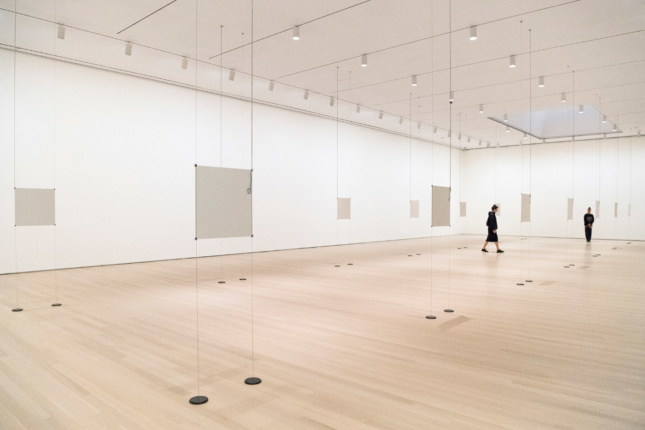
Bruce Nauman: Disappearing Acts will be on display at the Manhattan MoMA until February 18, 2019, and at PS1 until February 25, 2019. The museum will also be presenting live performances of the 1965 performance piece Wall/Floor Positions from 12:00 PM through 4:00 PM every Thursday and Sunday, and every Friday and Saturday from 1:00 PM to 5:00 PM at PS1.






